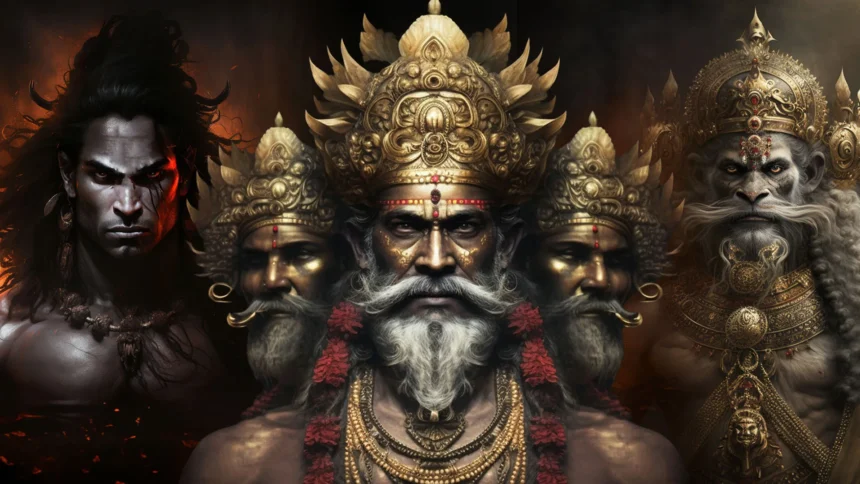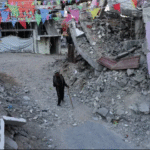From Cave Walls to Code: AI Avatars of Gods
The Ancient Power of the Sacred Image
Even long prior to the hashtags and trending algorithms, human communities expressed their beliefs in images. Animals, celestial designs, and representations of symbolism in prehistoric caves (Lascaux in France, or Bhimbetka in India) alluded to a religious connection to the invisible. With the development of civilizations, these figures changed in a more severe, more divine way, they became gods, chiseled in stone, drawn on the walls of temples or covered with gold leaves.
Most statues depicting Ra and Osiris in the temples of Ancient Egypt were not just the product of art, but tangible carriers of part of divine essence. Again, in the Greco-Roman world, marble statues of Zeus or Athena did not represent decorating; these apostles of worship, civic identity and political legitimacy were centers of emphasis.
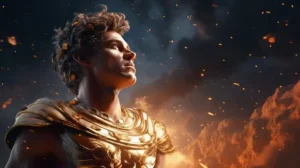
Sacred art has never been just a beautiful thing. It is a cultural memory activity, and a tool of group feeling. In medieval Christian Europe the illuminated manuscripts were not merely the Bibles themselves they were the theological proclamations painstakingly inked in order to educate, instill dread and convince. In India temple carvings and rich iconography could make Hindu deities visible in everyday life: they have been carved in granite and painted on walls down the generations.
Now every age has had its medium of the sacred. Clay, stone, papyrus, fresco, oil painting, photography: not a single technology has been too old to use once again to tell the oldest stories known to man.
The Industrial and Digital Turn
Religious imagery was rocked by a cultural earthquake when the printing press was invented in the 15th century. Now, religious texts and illustration could be wholesale-produced, bringing elite iconography right into the street. This ability to mass-produce and print images and distribute them affected Protestant Reformation, the Catholic Counter-Reformation, and other religious movements that followed.
Skip to the 19th century, and the introduction of photography sparked the first grand controversy of realism in religious art. Is the picture of a holy image or shrine just or even as potent as the actual one? Is it even capable of intensifying devotion through an additional source of reference image by being authentic? A lot of clerics answered yes – others were afraid of the deserialization of their traditions.
Digital imaging came by the end of the 20th century. Reproductions and imaginative revisions could be done with scanners and early image-editing software. There were religious calendars, posters, screensavers, saintly figures done in a vivid, even hyper-saturated color. These technological means were also democratizing- any person using a modest computer and a little expertise could reinterpret the divine.
No one had ever seen what would transpire when artificial intelligence joined the game.
The AI Revolution in Visual Culture
The blank entry of the artificially intelligent into the world of visual arts went unnoticed at first, this was done with neural networks trained to recognize objects in photographs, filter images, or create minor aesthetic gestures. Then, it was GANs (Generative Adversarial Networks) and diffusion models, which are able to create entirely new images, based on nothing more than a text description.
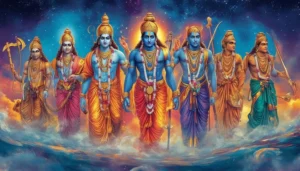
By 2022, it was possible to go online and, using systems such as DALL·E, Midjourney, and Stable Diffusion, generate images that meet an astonishing new level of detail, breadth of styles, and appeal in a few seconds, without any artistic training. AI did not simply imitate past styles, but created new ones at will.
Religious imagery seemed to have become one of the most provocative and noticeable frontiers in such a setting. One line of words might produce a high-resolution image of Ganesha riding a flying future day ride, Jesus lecturing on Mars, or Amaterasu framed in neon cyber punk light.
This thrilled some people: old tales brought into a new digital age. To some, it was too risky: a commercialization of the sacred into meme forms.
The Birth of the AI God Avatar Trend
The AI-created divine avatar viral wave has its origins in a few online experiments toward the middle of 2022. Hobbyists and artists started to share interpretations through A.I. of Hindu gods, Christian saints, Buddhist bodhisattvas and Africanized Orisha spirits: sometimes pious, sometimes mischievous, occasionally contentious.
The initial viral needle bounced by a user of Midjourney in India posting a collection to Instagram and Reddit titled, Deities in the Modern World. In each picture, recognized deities were set in modern-day cities: Shiva in a motorcycle jacket, Lakshmi in a trading desk at Wall Street, Hanuman driving a high-altitude rescue helicopter. The series went viral– tens of thousands of shares, comments and discussions in World News sections and Trending feeds.
Shortly afterward, a Brazilian artist took the template of Christian iconography: Jesus in street gear, the Virgin Mary a protester about the climate wars, St. Francis an environment-hacking cyberpunk. These became viral on TikTok and Twitter, where remix culture prospers.
It wasn’t just the newness of these works that made them nearly irresistible to online audiences, it was the fact that they were shareable. AI avatars of gods occupy an intersection of art, controversy, humor and faith all of which stimulates viral transmission.
This tendency did not remain at the periphery in art circles. It was in the mainstream outlets by late 2023. It was framed by headlines as a new trend in spiritual digital art or a potentially insidious frivolous trivialization of faith. The two framings created increased interest.
The Whole Story
The origins of the AI god avatar phenomenon are more than a meme cycle deep. They are ingrained in peoples 30,000 year history with sacred representation – the tale of continuous bargaining with tradition and invention.
In part two, we will walk over to five actual viral case studies one by one Hinduism, Christianity, Shinto and Yoruba tradition and indigenous art each, to understand how they spread fire, who partied and who tried to put out the flame. We shall also look into the psychological attraction that drives people to share them, to start with.
Case Study 1 — Hinduism: The Corporate Deities Series
Mumbai-based digital artist posting as @PixelPuja uploaded a series of 12 portraits generated by AI to Instagram in late 2022. They both represented a Hindu god in a hyper-modern corporate setting.
- Shiva, peering into a glass window in a high-rise boardroom, in a brocaded charcoal-grey suit, relaxing against it, the Ganga river still dripping out of his hair.
- Lakshmi, who sat at a shiny conference table, swarmed with stock market charts, gold coins digitally rainbow-sprayed across the floor.
- In the rescue helicopter, Hanuman is dressed in a jumpsuit, which is worn by rescue pilots; the background shows a city skyline.
The show immediately got viral with more than 2 million likes within 48 hours. It was caught up by Indian entertainment channels, and before long trickled into the World News cycle as politicians and religious leaders sparred over whether the photos were artistic tribute or religious profanity.
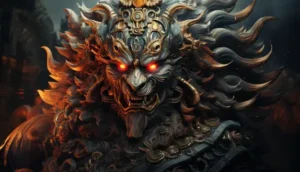
Adherents claimed it to be a contemporary reiteration and that it might enable younger generations to relate to spiritual narratives. The opponents retorted that boardrooms and trading floors represent greed and not dharma and putting statues of gods in these places deformed religious connotations.
In later interviews, the artist has also stated how they had grown up in an atmosphere of traditional temple art, but that they wanted to know what it would be like in the eventuality that these deities existed in our economic reality. Their profile, and commissions -The controversy made them known.
Case Study 2 — Christianity: Jesus of the Streets
A young Brazilian photographer turned AI artist called MarcosVFX (by the name that he uses online) began playing with Midjourney in São Paulo, Brazil to pose Biblical characters in modern cities in Latin America.
Of his works, Jesus of the Streets, which shows Christ in faded jeans, a hooded sweatshirt, and sneakers, reaching out to bless a group of children in a graffiti-painted alleyway, is best-known.
It became a popular image on TikTok, over which a Brazilian gospel-funk remix was added. In less than a week, it had passed to Twitter, Facebook and ultimately to YouTube news channels. Its worth was divided between evangelical leaders with some finding value in having a modern parable in pixels and others finding it to be a dangerous iconoclasm.
When the image started to appear on protest signs during anti-homelessness demonstrations in Brazil, it added more controversy. This was an AI-generated Jesus who suddenly became a political figure–something that complicated the distinction between devotional art and activism.
Case Study 3 — Shinto: The Cyberpunk Kami
The virally popular Shinto-based AI art reminded Japanese people of a different tone. One game concept artist at Tokyo, Aya Hoshino, has created a set of Cyberpunk Kami, a set of neon-glowing futuristic city versions of traditional Shinto spirits.
To give just one example, one famous installation featured the sun goddess Amaterasu with glowing circuitry patterns on her ceremonial robes floating over a nighttime intersection in Shibuya.
The image initially was popular in some niche anime and game discussion boards, so it was mostly a case of being catapulted out of Trending after it was covered by Japanese pop culture newswires. The principle that the kami of their ancestors could harmonize with the technological future of Japan aesthetics was dearly cherished by young followers.
Traditionalists within the Shinto shrines however, lamented that this sort of depiction lost the spirituality of the kami and turned them into mere cyberpunk characters.
Case Study 4 — Yoruba Tradition: The Orisha Reimagined
They were headlines in Lagos, Nigeria: after a series titled Orisha in the Age of Climate Change, AI artist Adeola Omisore became a viral sensation. Every Orisha, divine spirits in Yoruba religion was conceptualized as an environmental activism context.
- Yemoja, the river and ocean goddess, in front of dirty beaches, and calling the waves to wash them away.
- The god of thunder and lightning Shango stands on a wind farm, electricity in the sky.
The images became the centre of an environmental campaign run by young people, circulating massively on Twitter, Instagram, and even being printed on banners at the rally actions. According to Adeola, he and his team were aiming to demonstrate that Yoruba spirituality was always in conversation with nature and AI art could connect ancient knowledge and present-day emergencies.
There were some elderly people who hailed the initiative. Some feared that AI representations and particularly depictions that are nonsensically created would misrepresent the supposed original practices.
Case Study 5 — Indigenous Traditions: The Dreamtime Digital Project
Causing controversy in Australia, a non-Indigenous AI hobbyist created deity-like figures resembling the Dreamtime, the creator figures in Aboriginal creation stories, in a stylized fantasy-art format and posted them to DeviantArt.
The pictures were viral as they were beautiful, however, they were denounced as unauthorized cultural appropriation by Indigenous leaders within days. The artist later removed them, although, by then, they had been reposted tens of thousands of times.
The case provoked important concerns regarding whether AI, through its ability to scavenge huge repositories of images not in any cultural context, could be producing sacred images infringing on Indigenous intellectual and spiritual property.
The Psychology Behind the Appeal
What makes AI god avatars lives in our mind and feeds? The many psychological reasons of their viral momentum include:
● Newness + Recognition
They mix something old and well older than old (religious symbolism) and something incredibly fresh and new (AI esthetics). This conflict attracts attention in a moment.
● Emotional Resonance
Even to non-religious spectators, the images tend to emit symbolic gravitas the themes of mercy, justice, power, and mysticism seem to live on.
● Who We Are and Whose We Are
The posting of such pictures could be indicators of cultural boasting, spiritual affiliation, or rebellion towards traditional powers.
● Meme Potential
They are readily remixed, captioned and adapted and consumed by internet humor culture without sacrificing their initial interest.
● Algorithmic Boost
Engagements are rewarded on platforms. The greater the number of comments (positive or scandalous), the higher the algorithm will affect the image.
The Case for a Cultural Renaissance
In support of AI-created imagery of deities, their allies position it as the natural sequential development of sacred art. To them, it is not a substitute to the tradition but a supplement to the means individuals may relate to spiritual stories.
1. Multigenerational Accessibility
To a lot of younger audiences, centuries old paintings or the carvings found inside the temples, as beautiful as they may be, are remote. AI art places sacred figures in places of everyday acquaintance: in subway stations, busy marketplaces, on busy streets. Transforming these images into contemporary contexts, they have an opportunity to create a new interest in tales that would otherwise be overlooked.
2. The World Spirituality Dialogue
AI generated imagery usually leaves its cultural or religious spheres. An image of Amaterasu in cyberpunk Tokyo may make someone in Brazil want to look into Shinto, and an AI Jesus in streetwear may excite a teenager in Seoul. Within this perspective, AI can be seen as a conduit that brings spiritual traditions together and promotes dialogue instead of groupings.
3. Artistic Democratization
In the past, religious arts have needed the availability of materials and to have patrons and even ecclesiastical permission to produce the art. With the tools of AI, everyone with a laptop and imagination can get involved. The democratization resembles artistic revolutions of the past – the diffusion of religious woodcuts by the printing press to masses on pilgrimages now immortalized by photography.
4. Rebirth of Traditional Arts.
Others have used AI art to revive visual cultures that have been discredited or lost. A Canadian group of Indigenous youth was able to recreate the regalia of a ceremonial dance that was almost forgotten using AI and posted it online as part of a revitalization effort of their endangered language.
5. Social, Vibrant Culture
Cultures also only exist in that they have survived not because they are locked in time, but because they get modified. The proponents also claim that AI avatars are a device to keep the religious imagery in the world, as it may adapt to new forms according to the technologies and arts of each period.
The Case Against: Cultural Overreach
Critics claim that generated god images by AI are potentially hugely disrespectful, not only to a given religion but also to the concept of the divine as such.
1. Loss of Holy Ground Context
Religious art is not only the appearance of something, but its location, and sense of existence. AI images can take a character out of its religious-ritual context and transfer it to one which is cheap or inappropriate – and frequently with a view of gaining internet currency rather than piety.
2. Algorithmic Appropriation
The majority of AI image generators are trained on large sets of data scraped off the internet without their consent. This implies that the religious paintings done
over the centuries by religious artisans who were often devout are utilized without the knowledge of the artisans or the artist, not to mention that it is possible that the works infringe on both legal and divine property rights.
3. Distortion and Misrepresentation
For AI-generated images, any inaccuracies are easily introduced, whether it is simply confused symbols, changing skin tones or the nature of clothing significantly enough to change the meaning entirely without any natural theological direction to apply the correct image as intended. In other instances, such distortions are viewed as being heretical.
4. The Divine as object of commodification
The use of the AI avatars of gods on T-shirts, mugs, and NFT marketplace seems to be criticized as the commercialization of spirituality. The spiritual turns into yet another beauty to make money off of and lose its real meaning.
5. The risk of Dangerous Stereotypes
A biased data set could cause an AI model to reinforce or overrepresent stereotypes, either by designing all African deities with excessively exotic features or all of the European saints with Eurocentric skin tones and eliminating diversity in the past.
Legal Implications
1. Intellectual Property and Copyright
Age is a common defense to religious imagery in the public domain, but even modern works are frequently still under protection, especially where they are created by currently active artists or groups of artists. Legal rights may also be violated when, although the results are new, AI models scrape these without consent.
2. Related to this is cultural IP, Traditional Knowledge Rights.
Indigenous people and even some religious groups possess special cultural property rights that supersede the rules of ordinary copyright. As an example, Australia acknowledges the rights over the embodiment of Aboriginal sacred signs and the unauthorized reproduction of the same can be the subject of lawsuits.
3. Liability towards Crime or Damage
Although these laws take different forms across different nations, in some (e.g. Pakistan, some jurisdictions in the Middle East), the dissemination of AI-generated images of prophets or deities may lead to criminal charges. Such content can thus put creators in actual peril when shared internationally.
Ethical Implications
1. Community Involvement and Consent
Is it up to creators to ask faith leaders to create AI imagery of gods? Others say, yes, out of reverence. The other line of arguments is that art is a free speech per se, however, the ethical violation will result in a reputation loss.
2. Verisimilitude vs. Poetic License
There is an ethical dilemma of whether AI-produced religious art should be made more historically and theologically faithful or rather take the artistic license. Where is the line between imaginative re-invention and cultural perversion?
3. Imbalances of power in cultural representations
When the creators of AI imagery make the deities of non-Western civilizations, in most cases, they are not part of traditions; therefore, it might recreate a colonial system of extraction, with no benefits, as they treat their cultures like a resource to find aesthetic beauty but not make profitable art.
Theological Implications
1. Worship and What Representation is
In other faiths even the creation of any form of an image of the divine was controversial (ex: in some branches of Islam and Judaism). The development of AI representations revives the discussion whether these images are spiritually threatening or learning ones.
2. Sacred and Profane Spaces
Theology is frequently strict in the distinction between a sacred zone (temple, church, shrine) and a profane one (street, marketplace). This is blurred through the use of AI imagery where deities are seen within simple settings, and in certain instances, in the wrong context.
3. The Right to Consummation with the Divinity
Depicting a deity is an undertaking in most traditions bestowed upon trained and spiritually equipped artists. Artificial intelligence eliminates that boundary forever-bringing into question the importance of spiritual authority in the online world.
The Theologian’s View
“What troubles me is not the technology itself, but the intention behind it,” says Dr. Mira Patel, a comparative religion scholar at Oxford University.
“Religious imagery has always evolved, from cave etchings to medieval manuscripts to printed Bibles. But the sacred is not only in the image; it is in the care, ritual, and prayer that surround its making. AI strips away that process. We must ask: if you remove the sacred process, can the result still be sacred?”
Dr. Patel argues that the speed and detachment of AI art-making, typing a prompt instead of devoting weeks or months to painting risks “hollowing out the soul of the work.” Yet she also admits that,
“used thoughtfully, AI could help visualize theological concepts for educational purposes, especially across linguistic boundaries.”
The Digital Artist’s View
Kai Hernandez, a Mexican-American visual artist known for blending Catholic iconography with street art, sees AI as “just another brush in the box.”
“People forget that stained glass windows were once a radical technology. Oil painting on canvas was new once. Photography was scandalous for depicting the sacred without painterly mediation. Every medium feels threatening when it first arrives.”
Hernandez uses AI tools to create reference images for their murals, especially when experimenting with cross-cultural motifs.
“The danger isn’t the tool. The danger is when people use it without studying the culture, the symbols, the theology. Then it’s just fast-food spirituality, pretty but empty.”
The Sociologist’s View
Prof. Samira Okoye, who studies media and religion at the University of Cape Town, emphasizes the viral aspect.
“What makes AI avatars of gods so potent online is their memetic adaptability. They’re instantly remixable, infinitely shareable, and emotionally charged. That’s the perfect recipe for virality in the attention economy.”
Okoye points out that such images often travel stripped of context.
“A depiction of Oshun in a sci-fi setting might delight Yoruba diaspora audiences, but in a different cultural space, it could be exoticized or mocked. The meaning is not stable; it mutates with every repost.”
The Technologist’s View
For Ethan Li, an AI ethics researcher in Singapore, the core challenge is data transparency.
“If you train a model on sacred art without acknowledging or compensating the communities who created that art, you’re building on a foundation of appropriation. It’s digital colonialism, plain and simple.”
Li believes AI art platforms should implement “cultural provenance filters”, systems that flag religious or culturally sensitive material and require users to confirm intent before generating it.
“You can’t rely on everyone to self-regulate. The scale of AI output is too vast; the stakes, too high.”
The Community Leader’s View
Anika Rao, a Hindu temple youth coordinator in Toronto, has seen both sides firsthand.
“Our younger members loved seeing AI avatars of Krishna in Marvel-style illustrations. It made them curious about stories from the Mahabharata. But some elders felt it was disrespectful to depict him with muscles and a superhero cape.”
For Rao, the key is dialogue.
“Instead of banning AI art or embracing it blindly, we held a workshop where teens and elders discussed the images together. It turned into a conversation about what makes Krishna’s image sacred in the first place. That was more valuable than any single artwork.”
The Cultural Crossroads Ahead
When all these voices are combined, a vision arises about a culture that is about to redefine itself. AI deities are a provocative peg at the border between technology and art and spirituality and internet-driven globalization. They are not entirely good or bad, but, rather, they are attributes that, when used by people intent on accomplishing their goals, amplify an individual or group of individuals intentions, prejudices, and concern (or lack thereof).
Looking Forward: Possible Futures for AI and Sacred Imagery
1. Display posted online Regulated Cultural Zones
To prevent the abuse of religious imagery, governments or platforms could develop more intense strict moderation in some areas; a so-called sacred content zone.
2. Artificially Intelligent Models Presented by the Community
Religious groups could create their own AI models, the training of which has been carried out only on official imagery and could remain accurate and theologically correct.
3. Hybrid Ritual Art
Artists might also use the AI generated templates along with classical hand finishing, which means that now they can have both the fast and sacred production.
4. Cultural Algorithmic Messengers
Artificial intelligence might also produce not just the images themselves but also descriptions, either giving a didactic caption back or linked to a cultural source to keep things in context.
5. The black market of destiny
Even with an increase in regulation, underground AI painting forums will probably go on creating un-vetted or scandalous religious art, as long as the argument is in the news.
The Closing Reflection: Between Pixels and Prayer
Ultimately, the issue of whether AI avatars of deities may be a cultural revolution or a case of overdoing it is not so much about the images as us individuals, the cultures that created, distributed, and responded to these images.
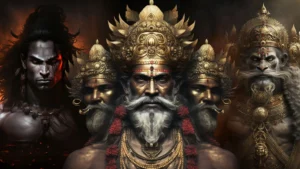
Images in religion have always been dynamic. It is ever transference: story told aloud to painting, painting to film, film to meme. Every transformation takes with it the hope of renewal and the threat of distortion. Artificial intelligence is just the next translator, the one that is uncannily fast and large, and can revive previously centuries-old iconography and also reduce its richness to an Instagrammable snapshot.
The new thing is the speed of change though. In the same week a 15th-century Madonna can be redrawn as a neon-lit cyberpunk vigilante, an AI Vishnu can be made into a pop-star through a thousand TikTok edits. These are not gradual, controversial cultural changes but fast-moving hail storm transformations that happen in real-time, and usually without the approval, or even the notice, of the populations that those depictions mean everything to.
And still, to many, these pictures have been a surprising key to a new discovery. A teenager in a São Paulo community gets a glimpse of the glittering AI-generated Orunmila version and inquires to his grandma about the Yoruba beliefs. It tells the story of a young Japanese-American who discovers an AI Amaterasu in a post-urban future and resolves to study the myths of Shintoism. Christian gamer discovers an anime version of AI Christ and feels, for the first time, that the sacred may exist on his/her native visual plane. These are not peripheral tales–they belong to the fabric of the way religion endures, evolves, and speaks over time.
The Double-Edged Icon
The difficulty here is that the weight of sacred symbols is that sacred symbols are not infinitely mutable. Their visual appearances tend to congeal centuries of ritual, doctrine, and common meaning. When the AI avatars sprawl those forms into all possible styles and genres, we run the risk of losing the seriousness that qualifies them as sacred to begin with.
Is this the problem though, not mutation but rather the lack of stewardship? Traditional art-making has apprenticeships, elders, masters and groups that screen and supervise production of religious images. On the internet, AI art does not go through those filters. No council of elders is refereeing the content-just the algorithm, the prompt, and the user intent.
A Call to Thoughtful Creation
It may not be a question of outlawing or letting everything go in a laissez-faire policy, but of selective culture.
Consider a digital commons populated with sacred artwork created by AI, with comments/explanations by members of that religion. Consider something like platform-based options to flag images with a blessing-required, or educational-use-only/community-approved tags. Consider AI models that would be trained to discriminate not merely on divine images, but on divine decorum, and would refuse to produce instances without putting them in context.
None of these solutions will be ideal nor will they be to the liking of everybody. Yet they might temporarily halt the mad stampede of images so that communities could direct their self-representation.
The Work Ahead
The only sure thing is that AI is not going to disappear. The genie is out of the bottle and the algorithms will keep learning, remixing and reframing the divine in ways that are a delight, and abomination to some. And our work is to determine the type of cultural gardeners we will choose to be in this quickly expanding sector of pixelated cultivated flowers and weeds.
Are these AI avatars visual fast food? Eaten, scrolled past, forgotten?
Or are we developing them as living dialogues with the past, invested in the respectful but not worshipful?
Between Pixels and Prayer
One thing that a person will realize when at this crossroads is that the sacred will never disappear just because it is depicted by an algorithm. Its survival will be what has never failed to sustain it–human care, human curiosity, human reverence. The problem of our time is to introduce those qualities into the digital workshop, to ensure that when the gods appear on our screens in new shapes, we receive them not as ephemeral amusements, but as demands to greater knowledge.
By doing so, one does not ask whether the use of AI avatars of gods is a cultural revolution or an overreach. It is only a question whether we will master ourselves to meet them; not in a panic, not in blind fervor, but calmly, patiently trying to see what needs changing,what must persist.
Ultimately, the algorithm is not what constitutes as sacred.
That is us.

